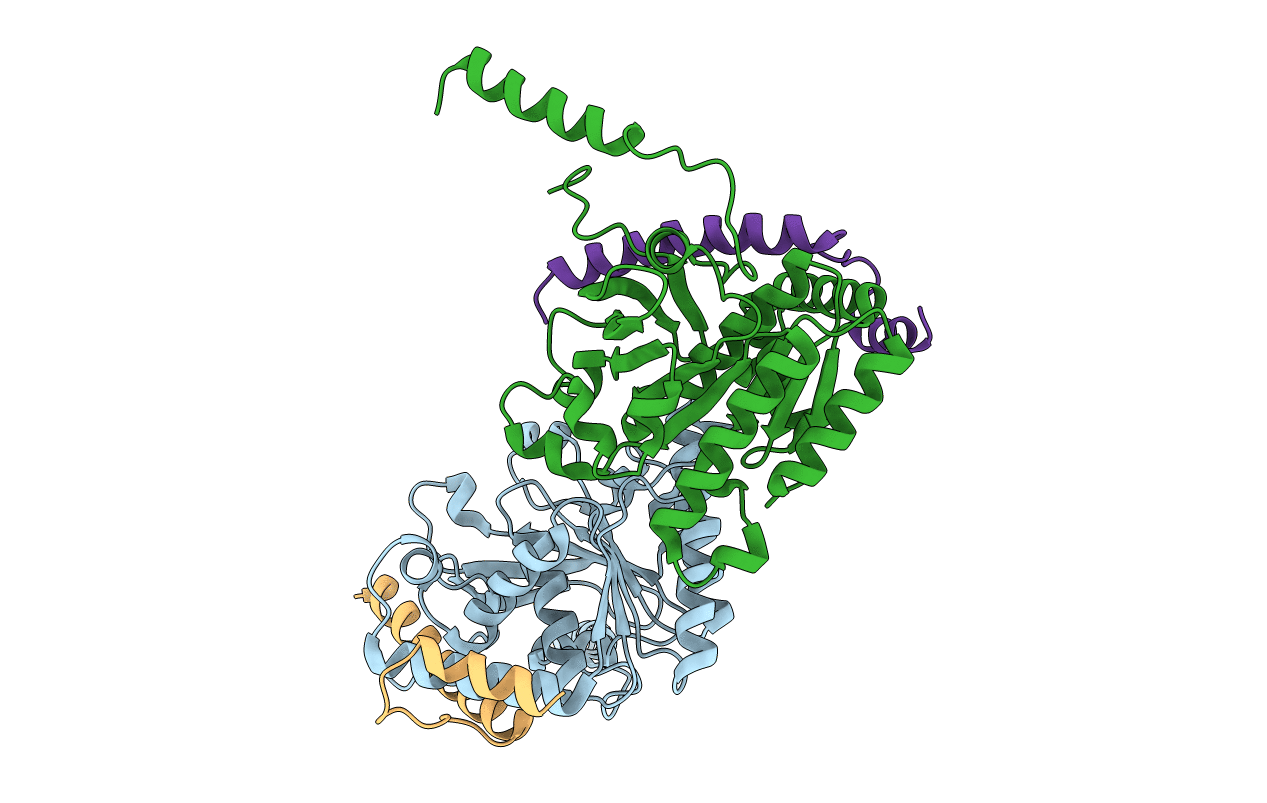
Deposition Date
2019-09-23
Release Date
2019-11-20
Last Version Date
2024-03-27
Entry Detail
PDB ID:
6KZA
Keywords:
Title:
Crystal structure of the complex of the interaction domains of E. coli DnaB helicase and DnaC helicase loader
Biological Source:
Source Organism:
Escherichia coli (Taxon ID: 562)
Host Organism:
Method Details:
Experimental Method:
Resolution:
3.10 Å
R-Value Free:
0.26
R-Value Work:
0.23
R-Value Observed:
0.23
Space Group:
P 42 21 2


